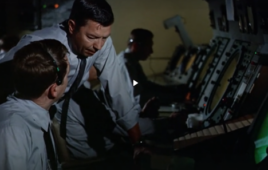The FCC Tuesday took the final steps to launch its Connect America Fund Phase II auction in July, which will dole out nearly $2 billion over 10 years to help expand broadband in unserved rural areas of the county.
The FCC set a March 30 deadline for interested service providers to submit an application to participate in the auction, which is slated to start on July 24.
The comission set out detailed procedures for auction and adopted an Order of Reconsideration resolving all pending challenges to earlier FCC auction implementation decisions.
Nearly 1 million homes and businesses across the country are in unserved rural areas where providers are eligible for auction support, according to FCC research. Qualified service providers participating in the auction will compete to receive federal support to expand voice and broadband service in unserved areas where there is no business case to expand or provide service absent government subsidies.
Funding will be awarded for eligible unserved areas in 20 states where incumbent price cap carriers declined FCC support offered through last year’s Connect America Fund. Bids will be made by census block groups.
At the meeting FFC Chairman Ajit Pai said that he hopes a variety of service providers will participate in the auction.
“We need and want everyone to participate: rural telcos, electric co-operatives, cable operators, price-cap carriers, satellite companies, and fixed wireless providers,” Pai said. “Of course, the most cost-effective technology for a particular area will vary.”
While the five commissioners generally supported the CAF II auction plans, some voiced concerns over certain aspects.
Commissioner Michael O’Rielly said he remained concerned about how certain procedures will impact auction participation.
“In particular, I still believe that the weights assigned to different service tiers will tip the scale towards funding gigabit service in a few communities at enormous costs while leaving many more unserved Americans with no broadband option whatsoever for many years to come,” O’Rielly said.
He noted that the weighting decision was partly made to encourage fiber-based broadband providers to participate, something he hopes will happen, but that a successful auction will require the broadest possible participation.
“At the same time, the decision to unduly penalize other technologies, especially satellite service, could have a negative impact on participation, not only in this auction but in the Remote Areas Fund auction as well,” O’Rielly said.
FCC Commissioner Mignon Clyburn, who has championed easing entry to the auction for smaller providers, praised the commission’s work.
“I’m pleased that we eased some of the burdens small providers face, including challenging financial qualifications and the use of consultants,” she said. “I am also pleased that we put in place the means for robust educational efforts that could uniquely benefit smaller providers.”
Despite the praise, Clyburn said she was displeased that the auction will not use smaller geographic units than census block groups, and voiced concern over the lack of incentives for expanding broadband on Tribal lands.
“Despite our unified desire as a commission to spur deployment on Tribal lands, we do not take any action here either,” Clyburn said. “The FCC’s 2016 Broadband Progress Report found, that more than 68 percent of Americans living on Tribal lands in rural areas, lack access to fixed broadband speeds of 25 Mbps down and 3 Mbps up. That we do nothing additional to incent Tribal broadband speaks volumes.”
FCC Commissioner Jessica Rosenworcel said that although the CAF-II auction has her support, she would like the commission to make more of an effort to work with states that are interested in collaborating on solutions to tackle rural broadband issues.
“I would have preferred that we worked right now with our state partners—like Pennsylvania—who have stepped up and sought out new forms of federal-state collaboration when it comes to universal service,” Rosenworcel said. “When our state partners express interest in working with us—and even offer up their own funds to do so—we should have that conversation. Instead of pursuing it with vigor, we put it off for another day. Going forward, we should do better than this.”
FCC Commissioner Brendan Carr praised the new program, saying he believes the commission is on the right path to removing regulatory barriers to broadband deployment.
“The procedures we’ve put in place will also help maximize the value that the American people get out of this program,” Carr said. “For instance, we target support to those geographic areas the Commission has identified as unserved based on our Form 477 data, which ensures that finite universal service funds are used where the need for them is greatest. And we include safeguards to address instances where our model might overpredict the number of customer locations. We also incentivize prudent spending by using a first-of-its kind reverse auction, which will award support to providers with relatively lower costs.”
He also emphasized the auction aims to include a broad range of service providers.
“As both the Order and the Public Notice make clear, we allow a range of providers and technologies—from fiber to fixed wireless and satellite—to compete, recognizing that there is no one-size-fits-all solution to getting broadband to unserved communities,” Carr noted.
Rosenworcel also took the time to advise the commission to consider holding a wireless spectrum auction to accelerate 5G wireless service.
“We currently do not have any major spectrum auction on the Commission calendar. Other nations are speeding ahead with plans for auctioning airwaves for the next generation of wireless services,” Rosenworcel noted. “South Korea, for instance, has already announced plans to auction the 28 GHz and 3.5 GHz bands between June and October of this year. But in the United States, all we have now is a blitz of bands being discussed in regulatory proceedings. If we want to lead in 5G we need to take action—and not the misguided effort to nationalize networks recently leaked to the press—but real action.”
Filed Under: Industry regulations




